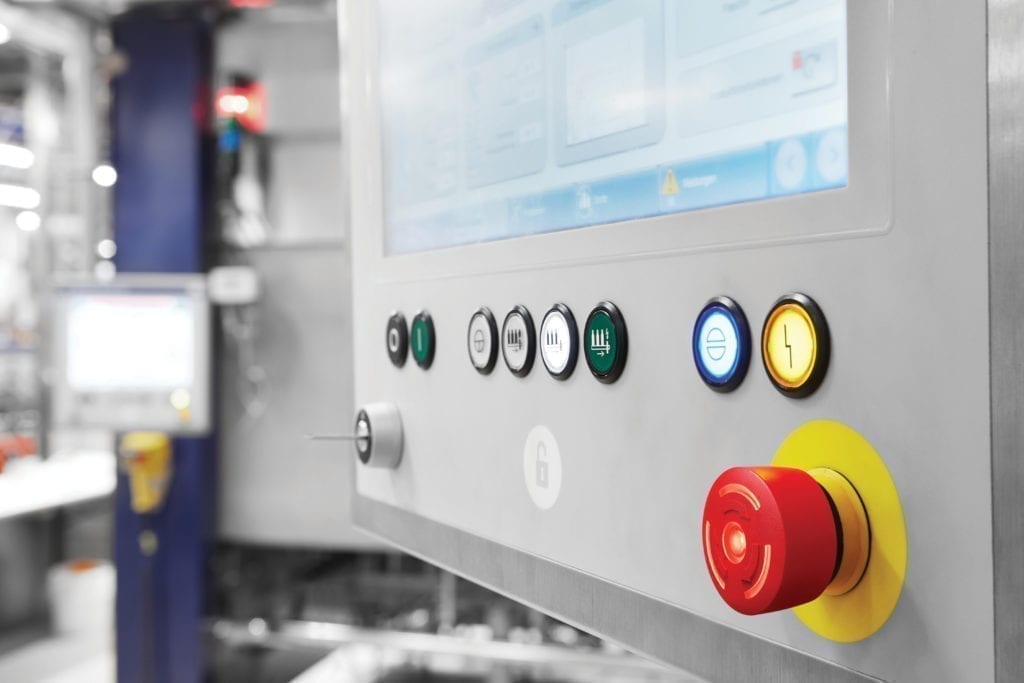 Human machine interface systems are the critical link between user and machine. EAO offers a useful list of factors to consider before you decide which interface products to specify.
Human machine interface systems are the critical link between user and machine. EAO offers a useful list of factors to consider before you decide which interface products to specify.
Whether it’s a simple two-button panel or an extensive software-based system, a well-designed HMI system should allow the user to perform necessary actions while providing noticeable feedback and essential system information. Every decision, from the layout to control element selection, style, and color, must be focused on providing functionality and interactivity for the user, increasing ease-of-use and improving productivity.
Determine operational requirements
Factors such as user environment, operating temperature, humidity, dust or vibration, are all pivotal considerations when determining material and functionality choices for HMI.
As safety should always be the top priority, it’s also vital to understand who will be operating the HMI. What is their role? Are they expert or novice users? Will they be operating with or without gloves? These are just some of the many questions to ask.
Select control elements
After determining the application, functional requirements and operator needs, you’re ready to select the control elements. For basic alphanumeric or graphical displays, LCD and LED non-touch displays are an ideal choice.
Touch displays are better suited for HMI systems requiring increased interactivity, however, it’s important to remember your key operational requirements when selecting a touch display. For example, resistive touchscreens, which are operated by a finger or stylus are popular in industrial applications due to their high resistance to moisture, dust, oil and cleaning agents. Infrared touchscreens, which register when a finger or object breaks an infrared light beam, are an ideal option for workers wearing gloves.
Yet, touch displays also run the risk of a ‘false trigger’. Unwanted reactions, which can be caused by anything from moisture to electrical interference, are one of the biggest safety and productivity concerns for HMI systems. As a result, touch displays are not suitable for all applications.
Specify tactile controls
In scenarios where touch displays are not suitable, particularly where the HMI is not in the operator’s direct line of sight, tactile control elements and electromechanical devices provide an alternative. Devices such as pushbuttons, emergency stops, selector switches and optical and acoustic signaling devices offer intuitive use, reliability and safety.
When selecting electromechanical devices, it’s important to consider the materials used and how the devices are installed, as well as their compatibility with any other systems.
HMI design is not a one size fits all approach. Mixed technology solutions combine touch screens with tactile elements to provide benefits such as intuitive operation, discrete pushbuttons, illumination and softkeys.
Think about safety
When specifying an HMI, you must consider all available safety mechanisms and select the most effective one. For example, emergency stop switches are covered by strict regulations and are actuated via a manual action, while keylock switches require some sort of prior authentication before being activated.
Standards are immensely important as both general and industry-specific requirements can dictate features, functional attributes and even the placement or color of components.
Remember, a poor HMI system can alienate users or even encourage them to circumnavigate the system, resulting in poor or unsafe system performance. HMIs should therefore create an optimal user experience with a mix of design and layout considerations, such as style, color, and tactile response coupled with ergonomic and intuitive operation. Working with a knowledgeable HMI and mixed technology solutions expert such as EAO is the best way to specify an HMI system that satisfies unique requirements.
